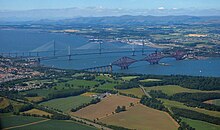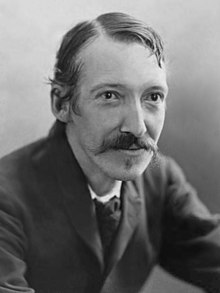The Edinburgh Portal
Welcome! — Fàilte! — Walcome!
Edinburgh (/ˈɛdɪnbərə/ ⓘ Scots: [ˈɛdɪnbʌrə]; Scottish Gaelic: Dùn Èideann [ˌt̪un ˈeːtʲən̪ˠ]) is the capital city of Scotland and one of its 32 council areas. The city is located in south-east Scotland, and is bounded to the north by the Firth of Forth estuary and to the south by the Pentland Hills. Edinburgh had a population of 506,520 in mid-2020, making it the second-most populous city in Scotland and the seventh-most populous in the United Kingdom. The wider metropolitan area has a population of 912,490.
Recognised as the capital of Scotland since at least the 15th century, Edinburgh is the seat of the Scottish Government, the Scottish Parliament, the highest courts in Scotland, and the Palace of Holyroodhouse, the official residence of the British monarch in Scotland. It is also the annual venue of the General Assembly of the Church of Scotland. The city has long been a centre of education, particularly in the fields of medicine, Scottish law, literature, philosophy, the sciences and engineering. The University of Edinburgh, founded in 1582 and now one of three in the city, is considered one of the best research institutions in the world. It is the second-largest financial centre in the United Kingdom, the fourth largest in Europe, and the thirteenth largest internationally.
The city is a cultural centre, and is the home of institutions including the National Museum of Scotland, the National Library of Scotland and the Scottish National Gallery. The city is also known for the Edinburgh International Festival and the Fringe, the latter being the world's largest annual international arts festival. Historic sites in Edinburgh include Edinburgh Castle, the Palace of Holyroodhouse, the churches of St. Giles, Greyfriars and the Canongate, and the extensive Georgian New Town built in the 18th/19th centuries. Edinburgh's Old Town and New Town together are listed as a UNESCO World Heritage Site, which has been managed by Edinburgh World Heritage since 1999. The city's historical and cultural attractions have made it the UK's second-most visited tourist destination, attracting 4.9 million visits, including 2.4 million from overseas in 2018. (Full article...)
Selected location article
Mons Meg is a medieval bombard in the collection of the Royal Armouries, on loan to Historic Environment Scotland and located at Edinburgh Castle in Scotland. It has a barrel diameter of 20 inches (510 mm), making it one of the largest cannons in the world by calibre.
Mons Meg was built in 1449 on the orders of Philip the Good, Duke of Burgundy and sent by him as a gift to James II, King of Scots, in 1454. The bombard was employed in sieges until the middle of the 16th century, after which it was only fired on ceremonial occasions. In 1680 the barrel burst, rendering Mons Meg unusable. The gun remained in Edinburgh Castle until 1754 when, along with other unused weapons in Scotland, it was taken to the Tower of London. Sir Walter Scott and others campaigned for its return, which was effected in 1829. Mons Meg has since been restored and is now on display within the castle. (Full article...)
Selected images
Selected transportation article
The Union Canal was opened in 1822 and provides an inland waterway link from Edinburgh to Falkirk and from there to Glasgow via the Forth and Clyde Canal. It is currently owned by the public corporation Scottish Canals and chiefly used for leisure purposes. (Full article...)
Selected area article

Cameron Toll is a suburb located to the south of Edinburgh, Scotland. Originally it was the site of a toll house built in the early 19th century, which was located on a stretch of road between Edinburgh and Dalkeith. Today the area is home to Cameron Toll Shopping Centre, which opened in 1984. The meaning of the name Cameron is suggested to be 'crooked hill', derived from the Scots Gaelic 'cam', crooked, and Old Irish 'brun' meaning hill, believed to refer to Arthur's Seat clearly visible nearby; the original name may have been Pictish. There are a few small housing estates to the east of the area.
Cameron Toll is 2 miles from Edinburgh city centre, 2 miles from the Edinburgh City Bypass and is served by many bus services to and from Edinburgh and Midlothian. It is close to The Grange and Newington and the area called The Inch. (Full article...)
Selected environment article
The Firth of Forth (Scottish Gaelic: Linne Foirthe) is the estuary, or firth, of several Scottish rivers including the River Forth. It meets the North Sea with Fife on the north coast and Lothian on the south. (Full article...)
Did you know?
- ... that George Parks was president of the Royal College of Surgeons in Ireland and his son Rowan Parks became president of the Royal College of Surgeons of Edinburgh?
Selected arts article
Robert Louis Stevenson (born Robert Lewis Balfour Stevenson; 13 November 1850 – 3 December 1894) was a Scottish novelist, essayist, poet and travel writer. He is best known for works such as Treasure Island, Strange Case of Dr Jekyll and Mr Hyde, Kidnapped and A Child's Garden of Verses.
Born and educated in Edinburgh, Stevenson suffered from serious bronchial trouble for much of his life but continued to write prolifically and travel widely in defiance of his poor health. As a young man, he mixed in London literary circles, receiving encouragement from Sidney Colvin, Andrew Lang, Edmund Gosse, Leslie Stephen and W. E. Henley, the last of whom may have provided the model for Long John Silver in Treasure Island. In 1890, he settled in Samoa where, alarmed at increasing European and American influence in the South Sea islands, his writing turned from romance and adventure fiction toward a darker realism. He died of a stroke in his island home in 1894 at age 44. (Full article...)
Selected education article
Edinburgh Napier University (Scottish Gaelic: Oilthigh Napier Dhùn Èideann) is a public university in Edinburgh, Scotland. Napier Technical College, the predecessor of the university, was founded in 1964, taking its name from 16th-century Scottish mathematician and philosopher John Napier. The technical college was inaugurated as a university in 1992 by Lord Douglas-Hamilton, becoming Napier University. In 2009, the university was renamed Edinburgh Napier University.
The university is based around its three main Edinburgh campuses: Merchiston, Craiglockhart and Sighthill. It has over 19,500 students, including those on-campus in Scotland and others studying on transnational programmes abroad and online. In 2018 this included nearly 9,500 international and EU students, from more than 140 nations worldwide. (Full article...)
Selected sports article
The Scotland national rugby union team (Scots: Scotland naitional rugby union team, Scottish Gaelic: sgioba nàiseanta rugbaidh na h-Alba) represents the Scottish Rugby Union in men's international rugby union. The team takes part in the annual Six Nations Championship, where they are the current Calcutta Cup and Doddie Weir Cup holders. They also participate in the Rugby World Cup, which takes place every four years.
As of 14 February 2024, Scotland are 6th in the World Rugby Rankings. (Full article...)
Selected religion article
The Church of Scotland (Scots: The Kirk o Scotland; Scottish Gaelic: Eaglais na h-Alba) is the national church in Scotland, and one of the country's largest, with 259,200 members in 2023. While active membership in the church has declined significantly in recent decades (in 1982 it had nearly 920,000 members), the government Scottish Household Survey found that 20% of the Scottish population, or over one million people, identified the Church of Scotland as their religious identity in 2019. The Church of Scotland's governing system is presbyterian in its approach, therefore, no one individual or group within the church has more or less influence over church matters. There is no one person who acts as the head of faith, as the church believes that role is the "Lord God's". As a proper noun, the Kirk is an informal name for the Church of Scotland used in the media and by the church itself.
The Church of Scotland was principally shaped by John Knox, in the Reformation of 1560, when it split from the Catholic Church and established itself as a church in the reformed tradition. The church belongs to the Presbyterian tradition of Reformed Christianity (Calvinism), having no head of faith or leadership group and believing that God invited the church's adherents to worship Jesus. (Full article...)
Related portals
In the news
No recent news
Associated Wikimedia
The following Wikimedia Foundation sister projects provide more on this subject:
-
Commons
Free media repository -
Wikibooks
Free textbooks and manuals -
Wikidata
Free knowledge base -
Wikinews
Free-content news -
Wikiquote
Collection of quotations -
Wikisource
Free-content library -
Wikiversity
Free learning tools -
Wikivoyage
Free travel guide -
Wiktionary
Dictionary and thesaurus



























































